Do you ever wonder which wire is hot when they appear identical? Whether you’re wiring an appliance or dealing with other electronics that use electrical components, this can be a perplexing situation for all types of DIYers. Simply inspecting the wires does not always reveal which one is carrying live current. Knowing which one is hot and how to work around those wires, on the other hand, can help keep you and your home safe from potential hazards. In this blog post, we’ll look at how to tell the difference between two similar-looking wires so you never make a fatal mistake again!

Difference between hot and neutral wires:
The main difference between hot and neutral wires is that hot wires carry electricity while neutral wires are used to complete the circuit. Hot wires provide energy to electrical appliances, while neutral wires return the current back to the power source. Hot wires typically have black or red insulation, while neutral wires are generally white. It is important to note that an alternating current needs both a hot and neutral wire for it to properly function.
In most cases, a green or bare copper wire acts as a ground wire which ensures safety by providing an alternate path for electricity if there is ever a short circuit. Hot and neutral wires should never be crossed when wiring electrical systems as this can lead to serious injury or death due to electrocution. If you need help understanding the difference between hot and neutral wires, it is best to consult a qualified professional electrician.
Which wire is hot when both are the same color
When two wires that are the same color, such as black and black, need to be tested with a multimeter, it can be difficult to determine which is positive and negative. To figure out which wire is hot in this situation, you will need to set your multimeter to the proper range for testing voltage or current:
Test using a multimeter:
- Set your multimeter to “Volts AC” or “Current AC”
- Touch the probes of the multimeter to each of the two wires, one at a time.
- Note which wire has higher voltage/current when tested, this wire is hot and should be labeled as positive/negative depending on your needs.
- Repeat these steps with “Volts DC” or “Current DC” if you need to measure direct current instead of alternating current (AC).
It is important to remember that these results can differ depending on whether you are measuring AC or DC currents and voltages, so always check both settings before determining which wire is hot. Additionally, exercise caution during testing as the direct current can cause a mild shock if you touch both probes at the same time. Lastly, always test with caution and according to safety regulations.
Note:
If you are uncertain how to properly use a multimeter, consult the user manual or seek assistance from a professional electrician.
Tips for staying safe when working with electricity
- Always read the manufacturer’s instructions before using electrical equipment.
- Wear protective clothing and safety goggles at all times when working with electricity.
- Don’t work alone – always have someone else in the vicinity who can help if something goes wrong.
- Make sure you use the correct type of fuse for each job, as this can prevent overloads that could result in fires or shocks.
- Ensure your tools are well-maintained, clean, and dry to reduce the risk of electric shock or fire hazards due to frayed wiring or loose connections.
- Disconnect power from an appliance before attempting any repairs or maintenance activities on it, and make sure the power is turned off at the mains.
- Always use reliable extension leads and check them for signs of damage before using them.
- Have a suitable fire extinguisher handy in case of any emergencies.
- When working outdoors, be sure to use an outdoor-rated power cord and weatherproof electrical box if necessary.
- If you notice any unusual sounds or smells when working with electricity, stop immediately and seek professional help as soon as possible.
By following these safety tips, you can ensure that your work with electricity is safe and efficient. Remember to always take extra precautions whenever handling potentially hazardous material such as electricity – it’s better to be safe than sorry!
Frequently Asked Questions:
In many cases, the hot wire is indicated by a marking or writing on the insulation. Look for any words such as “hot”, “load”, or “power” written on the cable sheath. Additionally, use a voltage tester to determine which wire is hot. Touch one probe of your voltage tester to each wire in turn and check for power. The wire that registers a reading of 120 volts (depending upon your area) will be the hot wire. Be sure to always turn off the power before working with wiring!
The best way to determine which wire is hot when both are black is by using a voltage tester. This will tell you immediately which wire has the greater electrical current running through it. However, if you don’t have access to a voltage tester, there are other ways to identify the hot wire without causing any damage. If both wires are coming from the same device and they don’t have labels or inscriptions on them, then one of them will be marked in some way that can indicate which one is connected to the breaker panel’s power source (the hot side).
Yes, two hot wires can share a single neutral. According to the National Electrical Code (NEC) standards, both conductors must be of the same size and same voltage rating for them to be connected with a single neutral wire. It is important to note that when connecting more than one hot wire to a single neutral it may create an unsafe situation due to the extra current draw on the circuit. For this reason, it is always recommended to consult with a qualified electrician before attempting any electrical work.
Final Note:
Finally, when there are two wires of the same color, it is critical to use a voltage tester or multimeter to determine which wire is hot. It is not safe to assume that because two wires are the same color, one is neutral and the other is hot. Voltage testing with a voltage tester or multimeter will provide precise information about which wire is hot and which is neutral. This knowledge can help you avoid electrical shocks and damage caused by faulty connections.




